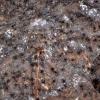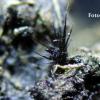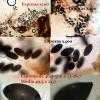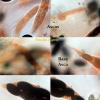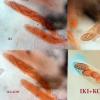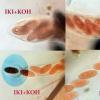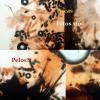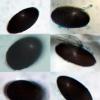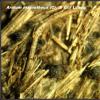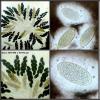
29-03-2025 09:08
 Martine Vandeplanque
Martine Vandeplanque
Bonjour.J’ai essayé d’étudier un Daldinia.Qu

30-03-2025 10:24
Gonzalez Garcia MartaGood morning, I would like to know the opinion of

31-03-2025 17:01
akcay mustafa emreHello everyone, My name is Mustafa Emre Akçay, a

30-03-2025 12:41
Me mandan el material seco de Galicia (España), r

24-03-2025 21:26
Bonjour, J'ai besoin d'une confirmation ou infirm

29-03-2025 06:21
 Francois Guay
Francois Guay
Hi! I found this interesting tiny ascomycete on i

29-03-2025 05:45
Sebastien BassoHello, I'm conducting a mycological inventory in

27-03-2025 22:25
 carl van den broeck
carl van den broeck
On Metzgeria furcata I found hundreds of small whi
En excrementos de caballo
Castillo Joseba,
14-12-2014 13:35
Jacky Launoy,
14-12-2014 16:10
Re : En excrementos de caballo
Hola,
try Podospora australis. See in Doveri pagina 960 961
try Podospora australis. See in Doveri pagina 960 961
Peter Püwert,
14-12-2014 16:49
Re : En excrementos de caballo
Hi all,
in my opinion isn't a Podospora species. Maybe Arnium cf. macrothecum. P. australis have four spores only.
Greetings Peter.
in my opinion isn't a Podospora species. Maybe Arnium cf. macrothecum. P. australis have four spores only.
Greetings Peter.
Castillo Joseba,
14-12-2014 17:09
Re : En excrementos de caballo
Peter ... hay algun enlace o documento donde pueda ver Arnium macrothecum... tienes información de medidas esporales o detalles para la identificación ?
Michel Delpont,
14-12-2014 17:43

Re : En excrementos de caballo
Bonsoir.
Effectivement il ne s'agit pas de Podospora australis qui lui ne possède que quatre spores par asques, des spores également plus longues et des poils différents. Arnium macrotheca semble être une bonne direction, mais il faudrait vérifier sur des spores mûres, en dehors des asques qu'il n'y a pas d'appendices mais une enveloppe fimbriée autour de la spore. Ce caractère n'est pas toujours facile à observer et il vaut mieux colorer la préparation ( par ex. avec de l'encre ).
Michel.
Effectivement il ne s'agit pas de Podospora australis qui lui ne possède que quatre spores par asques, des spores également plus longues et des poils différents. Arnium macrotheca semble être une bonne direction, mais il faudrait vérifier sur des spores mûres, en dehors des asques qu'il n'y a pas d'appendices mais une enveloppe fimbriée autour de la spore. Ce caractère n'est pas toujours facile à observer et il vaut mieux colorer la préparation ( par ex. avec de l'encre ).
Michel.
Castillo Joseba,
14-12-2014 19:30
Michel Delpont,
14-12-2014 20:28

Re : En excrementos de caballo
Puede ser traducido por envoltura gelatinosa irregular. Visualización de los registros en la base de datos. Para el tinte sólo tratar con tinta ordinaria, a veces puede ser apropiado.
Michel.
Michel.
Norbert Heine,
14-12-2014 23:47

Re : En excrementos de caballo
Hola,
also in my opinion it is Arnium macrotheca (Cr. & Cr.) Lundq., like Peter said.
Typical are the stiff hairtufts on the necks (I found it until 500 µm long!) and the ascospores surrounded by a gelatinous sheath not blackening in Indian Ink.
Also your microscopic measurements fit very well with A. macrotheca.
I found it only few times in Germany, always on old horse dung.
Here are some pictures from my last gathering to compare.
Norbert
also in my opinion it is Arnium macrotheca (Cr. & Cr.) Lundq., like Peter said.
Typical are the stiff hairtufts on the necks (I found it until 500 µm long!) and the ascospores surrounded by a gelatinous sheath not blackening in Indian Ink.
Also your microscopic measurements fit very well with A. macrotheca.
I found it only few times in Germany, always on old horse dung.
Here are some pictures from my last gathering to compare.
Norbert
